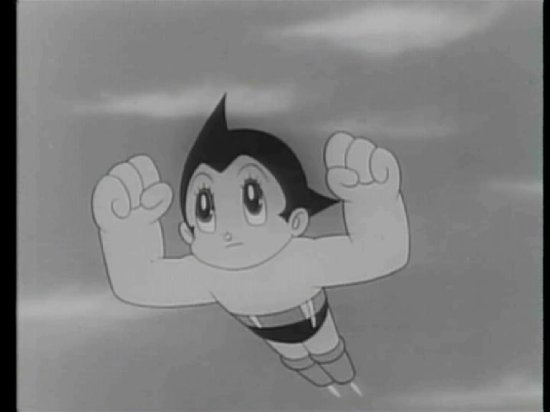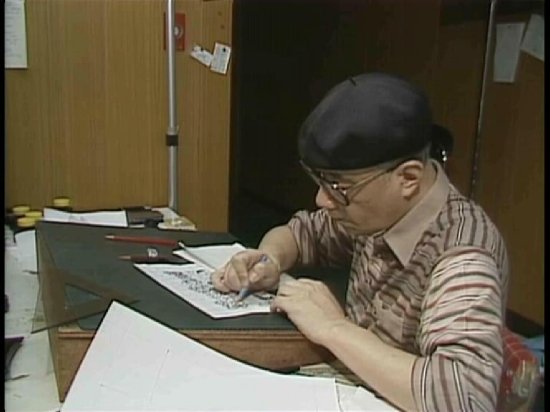The Art Of Osamu Tezuka: God Of Manga
It's not often that someone can be considered the father of an entire entertainment industry, but it's not an unjustified claim to make in this case. It could well be that without Osamu Tezuka, there would be no manga and anime today, at least not in their present forms. A man that has influenced all those who have come after him, that has left a legacy that stretches 50 years, certainly makes his presence felt on our DVD and manga shelves with titles like Astroboy and… no, give me a minute… Astroboy and… yes, there's Metropolis and um, Blackjack and something to do with a lion…
That's the one problem we have in the West when it comes to anime and manga. It is so utterly transient. It's a now thing, where the next big thing on the horizon is eagerly awaited, and today's big seller is quickly yesterday's news. There are exceptions of course, and titles like Ghost In The Shell and Akira are never going to go away, but generally, the anime and manga industries always remain focussed on the here and now. It makes it difficult, if not impossible, to simply go into a shop and take in a creator's career in art and moving pictures by browsing through a couple of shelves. That's where this book comes in, The Art of Osamu Tezuka - God of Manga, by expert on all things anime, Helen McCarthy, with a foreword by the creator of Akira, Katsuhiro Otomo.
Published by Ilex Press, this could best be described as a Coffee Table Book, a sumptuous hardcover in a transparent vinyl dustcover, larger than A4 sized, with a raised profile image of Astroboy on the front, and a bonus DVD documentary held in the back cover. It stretches to 272 pages of high quality paper, and is filled with artwork, photographs and film stills. Like the perfect coffee table book, you can leaf through and gaze at the beautiful images for hours. But this can be more than just a coffee table book, it can be the definitive introduction to Osamu Tezuka, and that all depends on the text that goes along with the pictures.
Thankfully, this is where the book excels. Helen McCarthy is certainly knowledgeable about her subject, and the list of references at the back of the book indicates the amount of research that went into gathering and collating the information. But she's also engaging and entertaining as a writer, making Osamu Tezuka's life story easy to lose oneself in. The book is structured quite logically, with an introduction followed by Osamu Tezuka's life story. Apart from his childhood and upbringing, it's split into decades, leading up to his death in 1989. Following that, there is a look at Tezuka's legacy, his unfinished works, and the impact that he still has today.
Each chapter follows a similar format, with a look at Japanese history and society during that period, a recounting of the major events in Tezuka's life, and then a look at the key works he produced in that period. Tezuka was prolific in the extreme, and this book can't encompass everything, and even what it does cover is usually given a paragraph or two describing the story, and where it stands in the Tezuka canon, along with plenty of artwork. It's an appealing way of putting everything in context. There are a couple of exceptions. One chapter is given to explaining Tezuka's star system, the novel way that he created and used, and reused his characters. And of course Astroboy gets more than just a paragraph to himself. In fact his origin story is reproduced here, and it's fascinating to behold.
Of course there is the DVD in the back, a very pleasant bonus. It's a documentary filmed in 1985, and for the first time Osamu Tezuka let the cameras into his creative process. The documentary crew followed him for a period of time as he worked at his desk, worked with his animation studio, invited the crew into his home, went to the Hiroshima Animation Festival, and never, ever, once stopped creating. It's a wonderful insight into a fascinating character, and as such it's the ideal accompaniment to this book. The DVD itself lasts 45 minutes, is in Japanese, subtitled in English, and is fairly good quality for its videotape origins. There is a flaw in that the playback loops back to the beginning after chapter 9, and you'll have to select chapter 10 manually to see the conclusion. But it's a minor annoyance.
I loved this book, although as a fan of anime I have a slight bias. Helen McCarthy has stepped away from Tezuka the legend, and has written about Tezuka the man, and this book is rich in detail and revelatory as a result. It does explode a few myths; most prominently the common held misconception (one that I had) that Tezuka created anime and manga single-handedly. What he achieved still resonates today, but the book also takes time to point out those who influenced Tezuka in the first place, as well as his contemporaries who were moving the manga and anime industries in similar directions in parallel to Tezuka. What I enjoyed most was reading about his various creations, none of which I have seen, yet recognising elements paid homage to by anime and manga creators that I am familiar with, in shows and manga that I do enjoy.
That this book would be at home on the shelf of any anime or manga fan goes without saying. It's a rich resource, a wonderful introduction, and an informative biography of Osamu Tezuka, and you can immerse yourself completely in its lush artwork. But if you have the slightest interest in Japanese pop culture, I would make room for this book as well, simply because the legacy of Tezuka is so influential. All that remains is for his extensive back catalogue to be translated into English, and that's just what tezukaosamu.net have been working on. I can't wait to see the first results.
The images have been taken from the bonus documentary DVD. Visit the Ilex Press website to find out more.



Your Opinions and Comments
Be the first to post a comment!